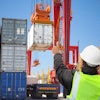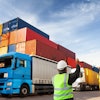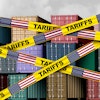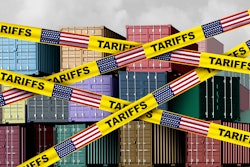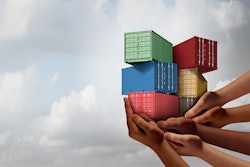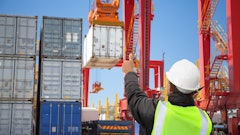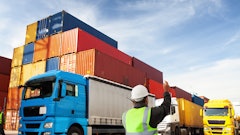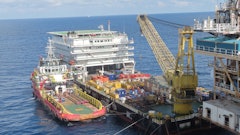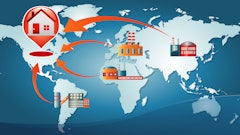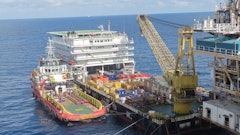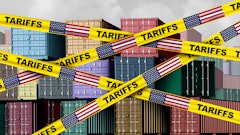
While still in flux, the post-tariff era is shaking up global retail supply chains in ways that will ripple through the industry for the next several years. Though it may be hard to keep track, this isn’t the first time world events have exposed significant vulnerabilities in the global supply chain, with the COVID-19 pandemic being the most recent example.
How businesses apply lessons learned – and how they incorporate the considerable advances in technology since 2020 – will determine which ones will succeed in the post-tariff era and which may suffer.
According to an EY survey of senior level supply chain executives, just 2% of companies reported being fully prepared for the COVID-19 pandemic, highlighting widespread readiness gaps. Further, as the pandemic unfolded, 57% of respondents experienced serious supply chain disruptions, and 72% reported negative impacts. The EY findings are only underscored by a recent survey from The Conference Board, which found that 71% of U.S. CEOs plan to restructure their supply chains over the next three to five years in response to ongoing geopolitical tensions and labor challenges.
Over the next decade, global supply chains will drastically change in response to these shifting trade policies, geopolitical tensions and economic pressures. As tariff uncertainty lingers and global trade partnerships are reshaped, business leaders will also continue to rethink their global supply strategies, with reshoring and near-shoring emerging as critical approaches to build resilience and reduce future disruptions.
Supply chains, both within the United States and globally, resemble a complex network of roads and intersections. Each movement of goods is akin to navigating a road with stop signs, narrow lanes, and financial tolls at every turn. In 2025, these supply chain crossroads are increasingly impacted by tariffs, labor costs, packaging expenses, and transportation costs, all of which are expected to rise.
What is an often a hidden reality is the intersection of supply chains and costs due to tariffs and trade policies. If new tariffs affect imports and exports, the operations of these intersections could be disrupted. For instance, what if no cargo ships arrive at a port on the west coast of the United States for any number of days? This example would impact the local labor cost or expenses. The cost of packaging materials is already surging since the COVID-19 pandemic.
With newly launched tariffs in 2025 expected to remain in place over the next few years, businesses are already stockpiling goods. The concept of logistics is changing and shifting to be more flexible, in order to help corporations survive as a business. The interconnected nature of supply chains means that every increase in cost, whether in labor, packaging, or transportation will ripple across industries, affecting pricing and availability for everyday shoppers at grocery stores as well as the wholesale movement of goods.
Evaluating the need for reshoring vs. nearshoring
As companies consider shifting production closer to home as a potential way to mitigate tariff risks, leaders should consider the benefits and challenges to adopting reshoring and nearshoring strategies.
Reshoring is the process of bringing manufacturing and production from a foreign country to a company’s home country. In the United States, for example, the goal is for businesses to reduce dependency on foreign suppliers located in China or Vietnam, while also improving quality control over production and the handling of products. If reshoring succeeds, it has the potential to strengthen the supply chain and eliminate the fragile volatility we grapple with today. Reshoring’s risks, however, are considerable. It may revive domestic production, but it might repeat the pitfalls of the 1970s and 1980s—rising labor costs, inflexible infrastructure and global competition—the very struggles that led many firms to offshore in the first place.
Nearshoring offers a middle ground by bringing production closer to home while avoiding some of the cost and rigidity challenges associated with full reshoring. For companies in the United States, this often means shifting operations to Mexico or Canada instead of China. The tariff cost increase with Mexico and Canada could curtail such nearshoring, of course, but if those tariff issues go away, nearshoring could lower transportation costs, increase delivery times, and increase storage locations.
Both these strategies will continue to shape how the post-tariff supply chain evolves. However, because reshoring can be slow and costly - and time may not be something organizations have at this moment -- nearshoring to countries with favorable trade agreements could start to gain traction over the next several years.
Reshoring has gained momentum in 2025 due to new tariffs and trade policies. However, some experts have noted that tariffs will increase costs for any and all manufacturers, regardless of their location, including when they produce goods for markets local to them. This could have lasting implications for corporations both domestic and international.
Technology will continue to transform the sector
The twin shocks of the COVID-19 pandemic and escalating tariffs have underscored the importance of diversifying supply chains, not just geographically, but also in sourcing strategies and operational models. Amid these shifts, AI and machine learning offer a prospective path forward, with the potential to unlock new levels of agility and efficiency. In a post-tariff landscape AI especially will be dominant in optimizing inventory management and decision-making, and it may help eliminate uncertainty on consumer demand predictions for certain goods and services.
The industry is already seeing how integrating automation technologies can enhance supply chain and business function efficiencies. According to Rockwell Automation’s 9th Annual State of Smart Manufacturing Report, investment in technology has risen by 30%, with automation, AI, and employee training emerging as key strategies to address labor shortages and boost competitiveness. Together, these advancements are not just filling gaps, but they’re reshaping how work gets done and redefining what’s possible in modern supply chains and logistics.
To support this evolving landscape, universities are reshaping their curricula to integrate AI across disciplines – equipping students with the technical skills and real-world understanding needed to thrive in the current job market. From intelligent tutoring platforms that enhance problem-solving to coursework that demonstrates AI applications in healthcare, finance, and marketing, higher education is playing a critical role in preparing the next generation of adaptable, innovation-ready talent.
Embracing change in a post-tariff world
The shifts we’re seeing today in the supply chain are driven by economic policies, technological advancements and consumer behavior, and they will continue to influence the industry beyond short-term fluctuations.
As a result, the next decade of the supply chain sector will be defined by agility, innovation and resilience. This new reality will demand greater innovation, adaptability, and strategic foresight from both business leaders and universities alike. Those who anticipate change and move fast to invest in resilient, forward-looking strategies will be best positioned to profit in our fast-changing global economy.
These trends will only become more prominent – both in the United States and beyond.
